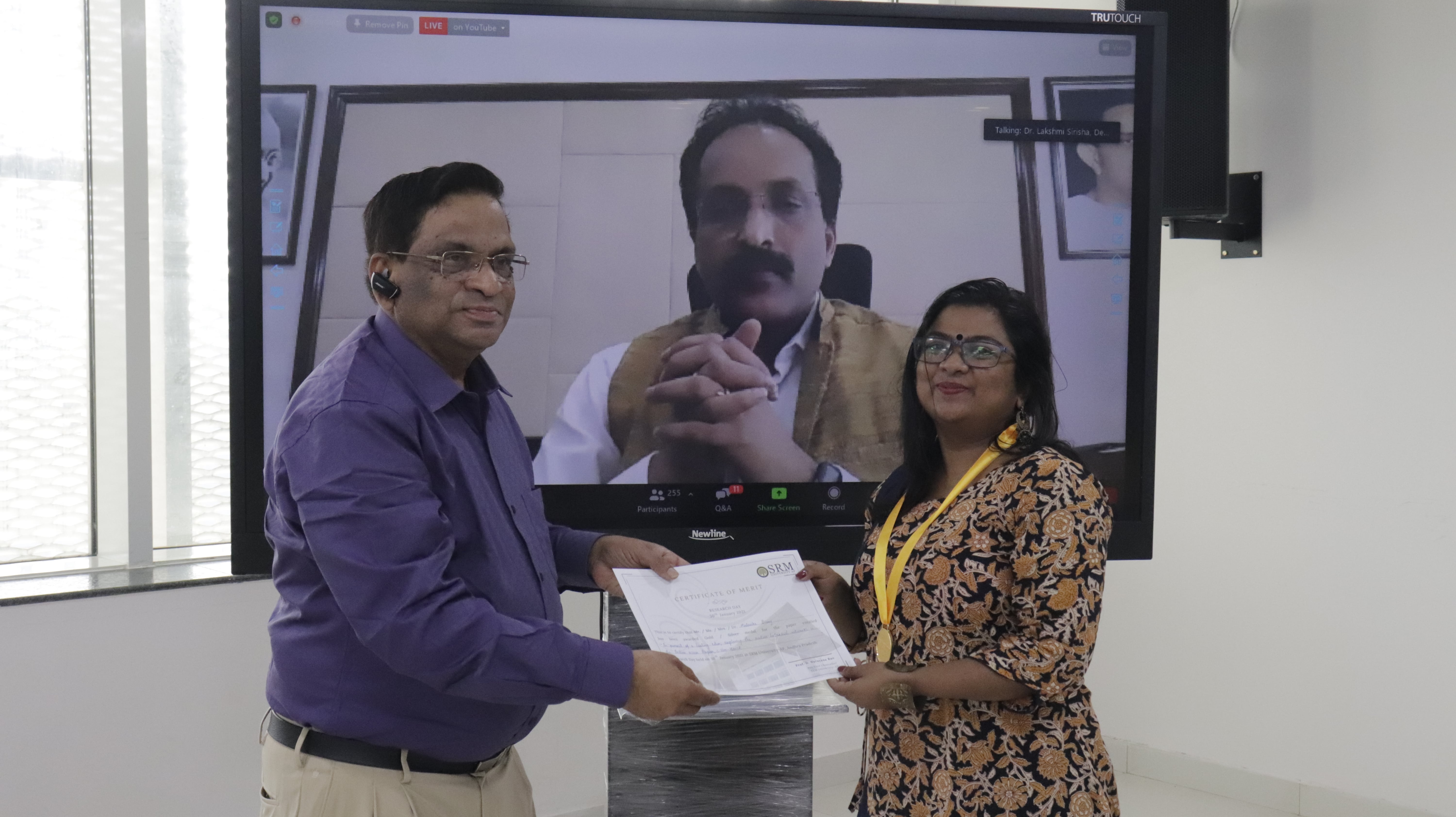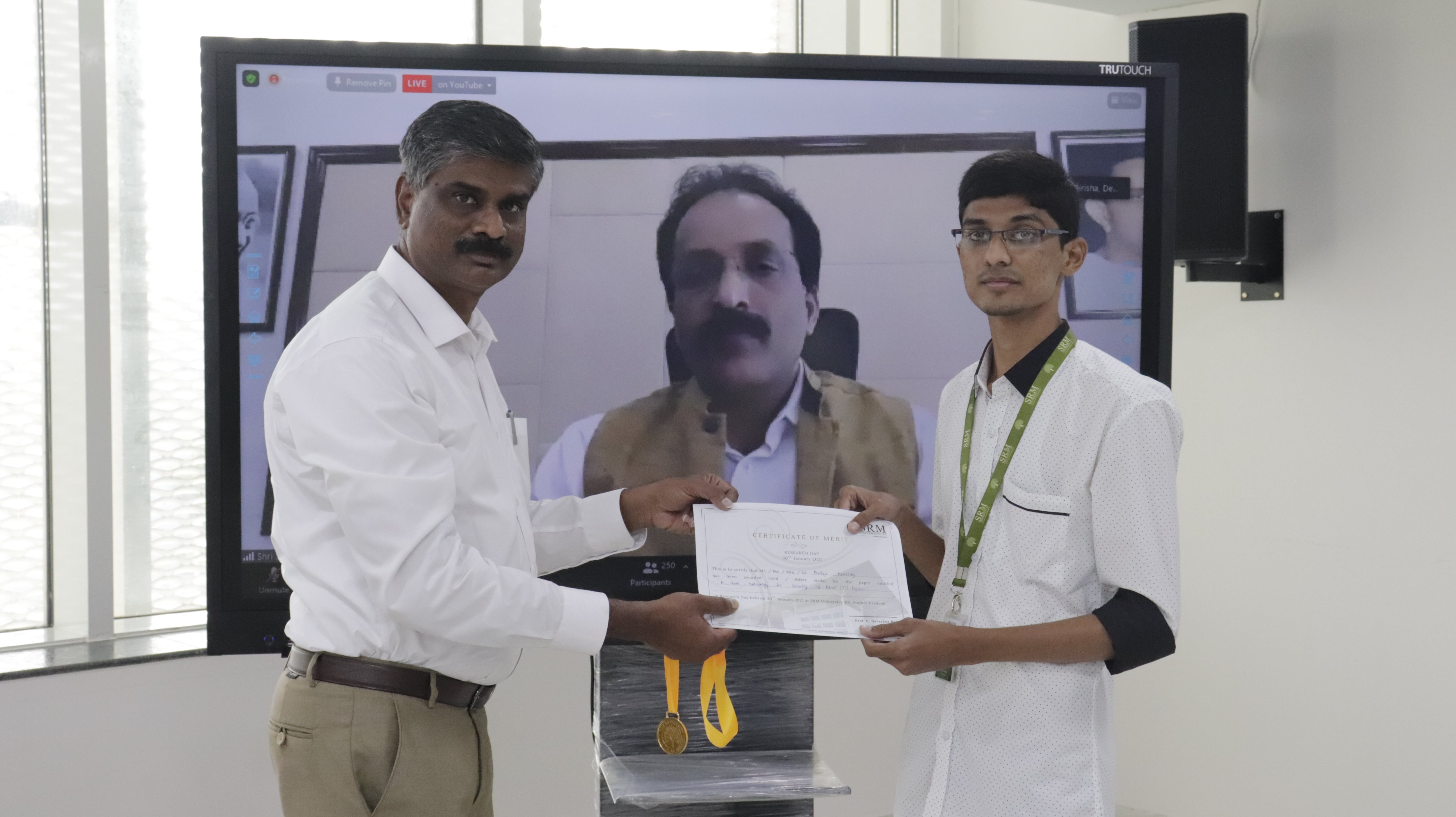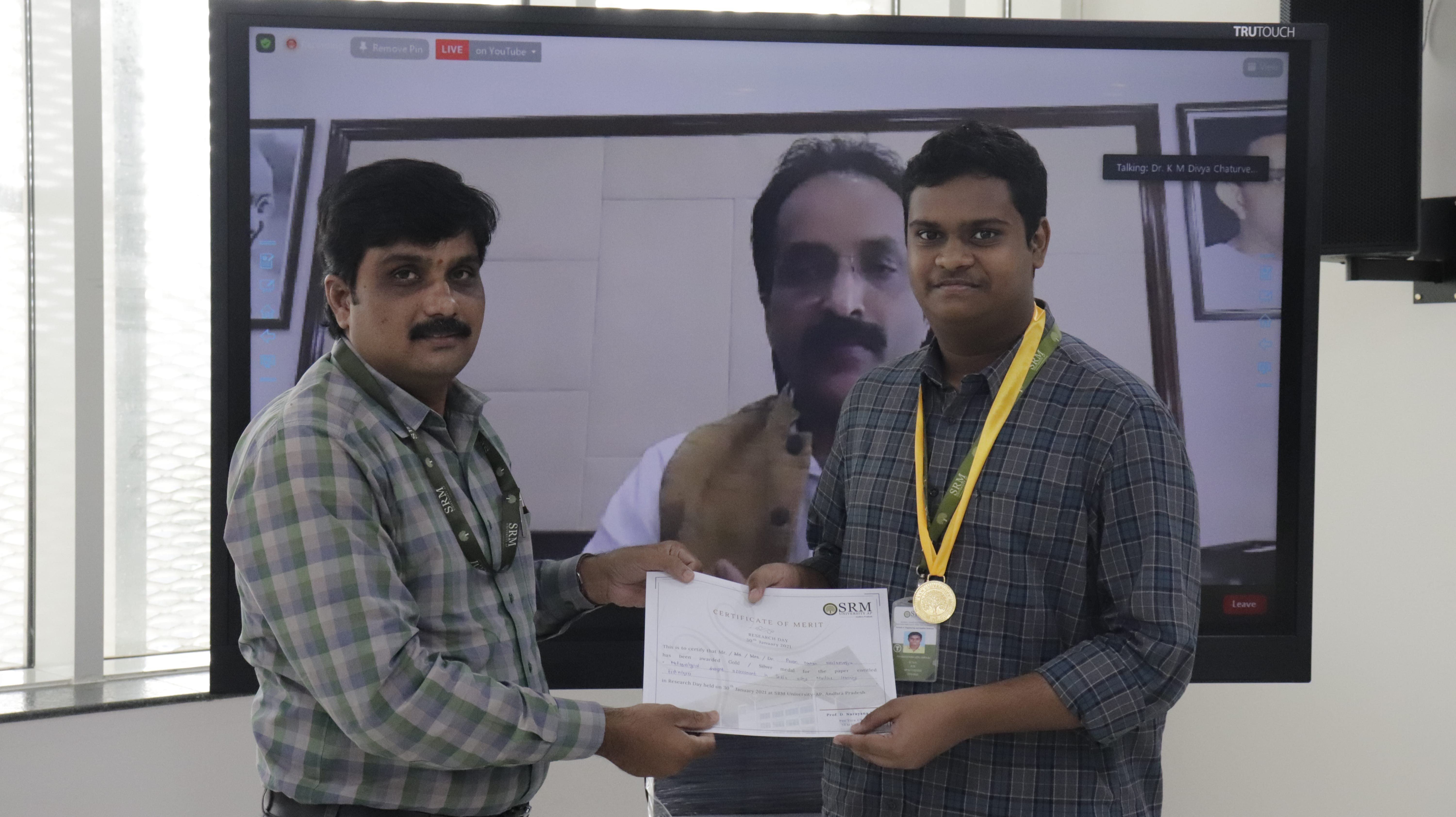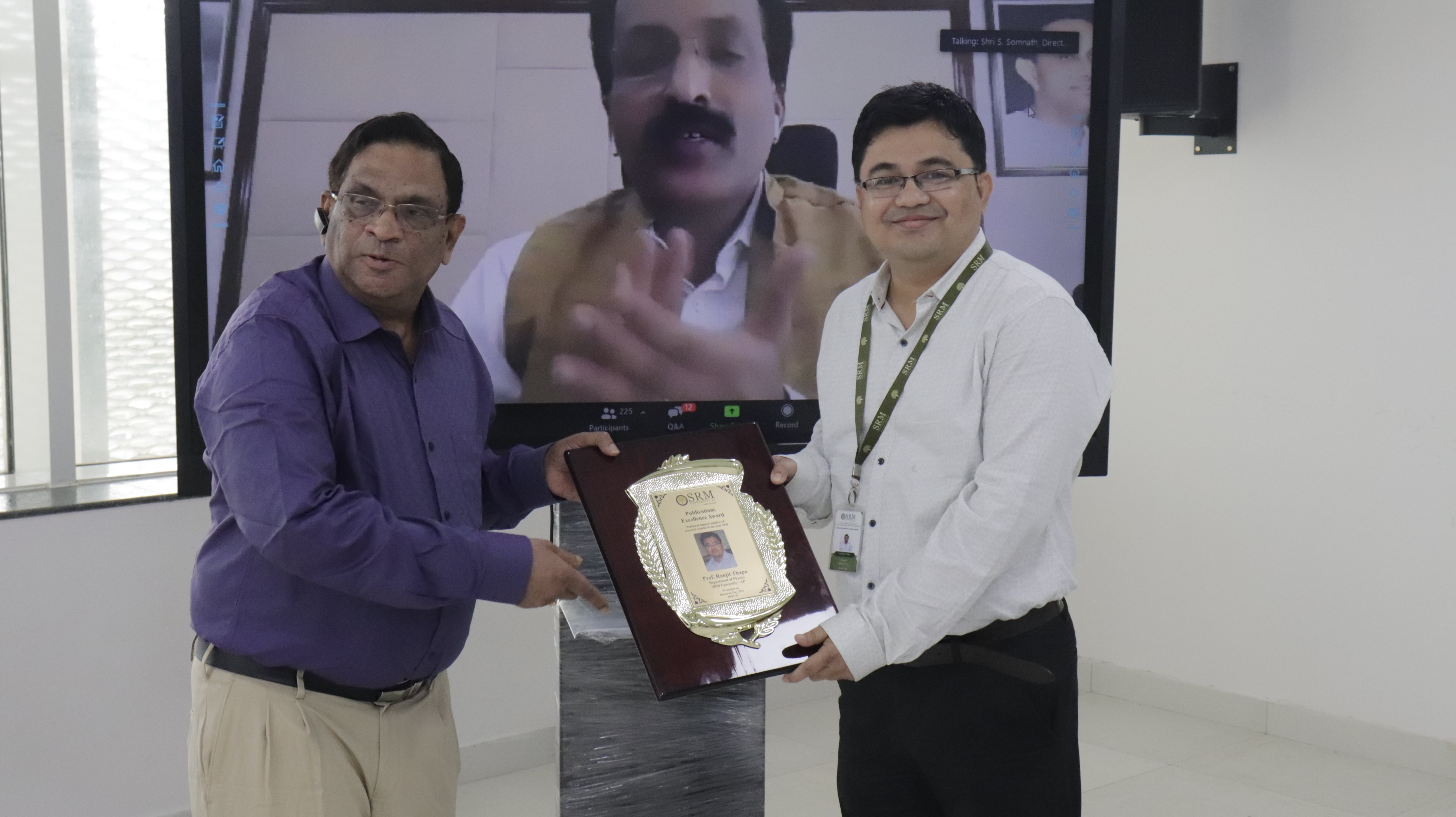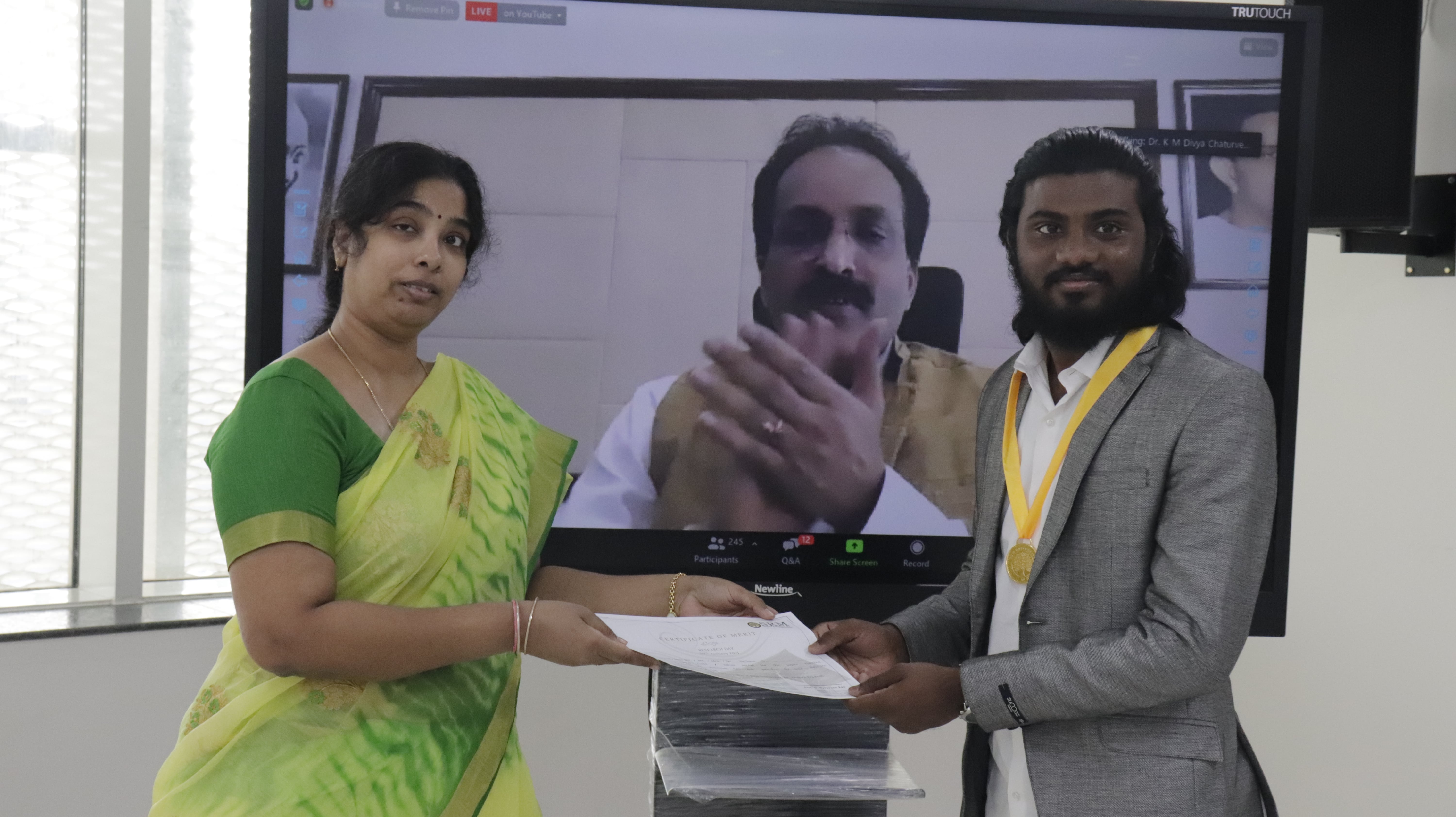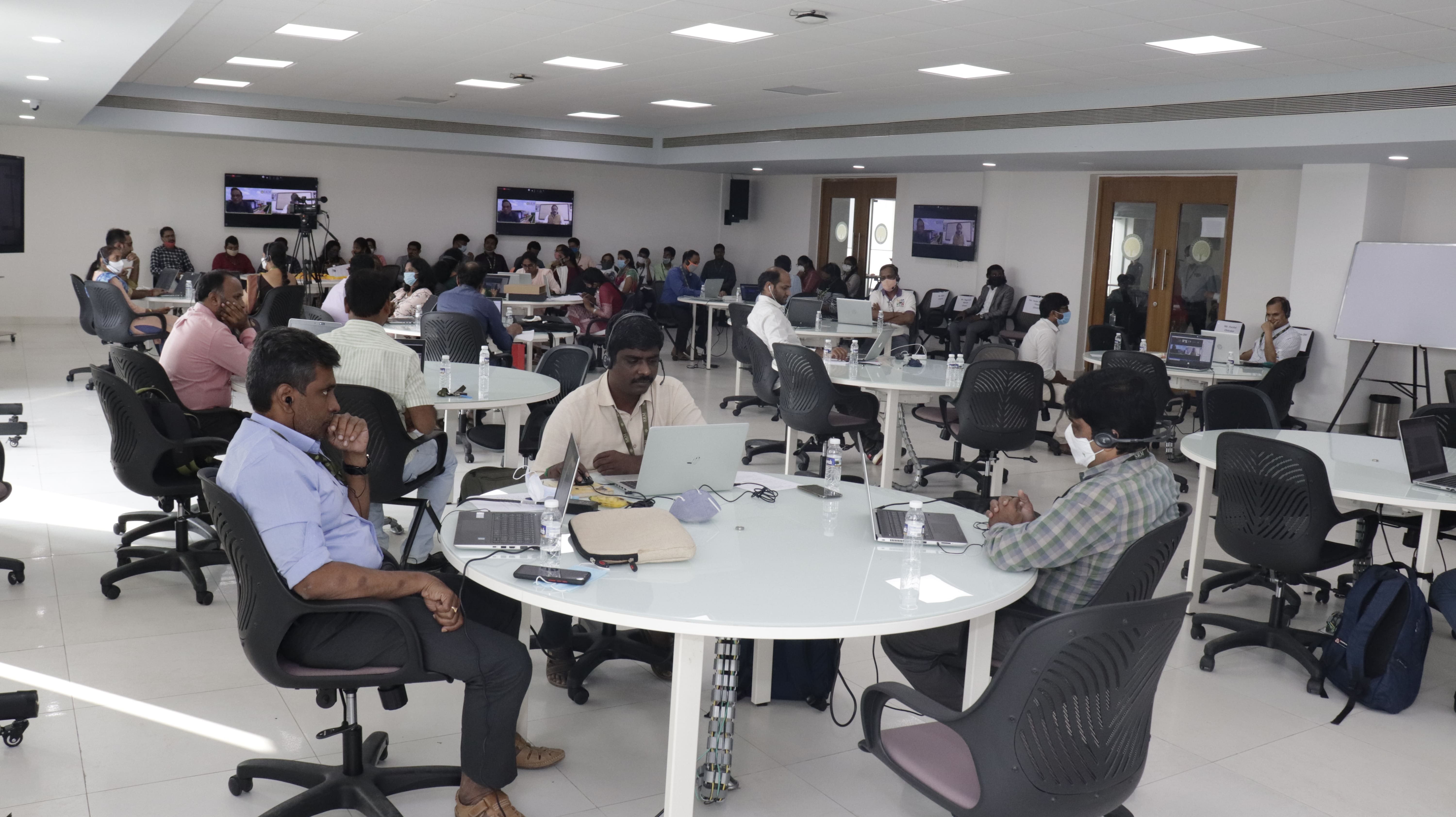SRM University-AP observed 72nd Republic Day
 Republic Day is observed in SRM University-AP to commemorate the day on which the Constitution of India came into effect, in the year 1950, and the country became a republic. Like every year, this year too the faculty, staff and students of SRM University-AP gathered around to honour the day. Amidst the COVID-19 pandemic, the university celebrated Republic Day by following the safety rules and regulations. The Celebration started with a Rangoli Competition, in which our neighbours from the surrounding villages joined us. This was followed by flag hoisting ceremony and march past of the staffs. Prof D Narayana Rao, Pro-Vice-Chancellor, did the honour of hoisting the National Flag. Mr Ernest Samuel Ratnakumar, Registrar; Ms Revathi B, Assistant Director-Student Affairs, Mr Abdul Mohimin, Assistant Director-Sports were among the dignitaries.
Republic Day is observed in SRM University-AP to commemorate the day on which the Constitution of India came into effect, in the year 1950, and the country became a republic. Like every year, this year too the faculty, staff and students of SRM University-AP gathered around to honour the day. Amidst the COVID-19 pandemic, the university celebrated Republic Day by following the safety rules and regulations. The Celebration started with a Rangoli Competition, in which our neighbours from the surrounding villages joined us. This was followed by flag hoisting ceremony and march past of the staffs. Prof D Narayana Rao, Pro-Vice-Chancellor, did the honour of hoisting the National Flag. Mr Ernest Samuel Ratnakumar, Registrar; Ms Revathi B, Assistant Director-Student Affairs, Mr Abdul Mohimin, Assistant Director-Sports were among the dignitaries.
In his address, Prof Narayana Rao briefly explained India’s progress since independence in the fields of Education, Industry, Healthcare, Agriculture, Information Technology and others. At the time of independence, India was a poor country with 12% literacy rate and 35-40 years of average life expectancy. In the past 70 years, India has emerged as one of the world’s leading knowledge superpowers. Many other countries also earned independence at the same time as India’s. But only India has been able to utilise its human resources and wisdom to achieve greatness. In the following years after independence, India did not even have enough food grains to feed a country of 30 crores people. Food grains had to be imported from other countries like Myanmar. However, today, India not only is solvent enough to feed its 130-crore people but also exports food grains to other needy and poor countries. Be it agriculture, education or healthcare, India’s progress so far has been remarkable. The reputed institutes such as IITs, IISERs, NITs, IISc, ISIs, AIMs are performing beyond expectations educating the people of this country. Leading research organisations and regulatory bodies such as CSIR, ISRO, DRDO, DST, DBT are rigorously working to make this country do big and achieve big. “These organisations came into being with great vision, and we feel very proud to say that they are on par with any other organisations of the leading developed countries. COVID-19 pandemic brought an unprecedented crisis all over the world. But Indian biotech companies were able to make the COVID vaccines within a very short span of time. It is a moment of pride for every Indian that India has become the world’s vaccine factory. No other country has the capability to produce vaccines in such a large number”, asserted Prof Rao. He further added that India had progressed very much in establishing communication even in the remote villages with the help of satellites. India’s advancement in designing, developing and launching satellites is exceptional. Data connectivity and Internet are the basic needs of today’s world, and India is the country that provides such connectivity at the lowest price in the world. Over the years after independence, India has learnt to use its human resource effectively. In today’s world, India produces the most numbers of skilled professionals to meet the need of this era. Indians are scaling greater heights in every sphere. Satya Nadela, Sundar Pichai are a few examples of how Indians are taking over the world with their brilliance and intellect. This country has been politically independent for a while, and it is now the high time to be technologically independent. “We are progressing very fast, and we have the power and potential to emerge as one of the major economic powers in the coming days. With a capability to turn every crisis into an opportunity, we move forward towards an ‘Atma-Nirbhar Bharat’ following our Prime Minister’s advice of Innovate, Patent, Produce and Prosper,” said Prof Narayana Rao.
Adhering to the spirits of patriotism, Mr Raviteja Reddy, Mr A Chaitanya, Mr P M Aditya, Mr K Praveen, K Yeshashwini, A Sravya, K Vasu, G Priyanka, students of mechanical engineering, demonstrated their eco-friendly bike which was made recently by converting IC Engine bike to electric bike, under the mentorship of Dr Venkata Nori and Dr P Jayaprakash Sharma. Their successful venture was highly praised by the dignitaries present in the event.
The event concluded with the Prize Distribution Ceremony. The Winners and Participants of Rangoli Competition and Fancy-Dress Competition for Kids were congratulated by Prof D Narayana Rao, Mr Ernest Samuel Ratnakumar and Smt Priya. Prof Rao felicitated Dr Sutharsan Govindrajan, Department of Biological Sciences; Dr Mannathan, Dr Mahesh Kumar Ravva, Dr Nimai Mishra, Department of Chemistry; Dr Jatis Dash, Dr Siddhartha Ghosh, Department of Physics for their research contribution in Nature Index Ranking-2020.
- Published in News
Research Day Celebration 2021
“Startups and Government bodies must be complementing one another to steer space industry towards excellence”- Sri S Somanath, Director, VSSC
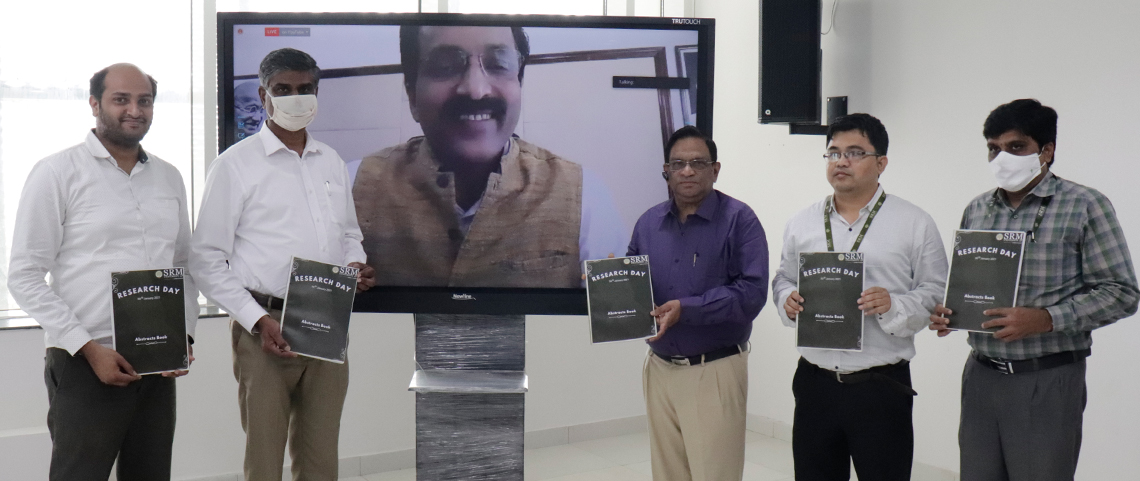 Research Day 2021 ceremony at SRM University-AP, Andhra Pradesh encompasses various endeavors aimed at appreciating and encouraging scholars to carry out extensive research works to enrich the society. Applauding the initiative, Dr P Sathyanarayanan, President, SRM AP stated “Research Day is when SRM University-AP commemorate the faculty and students for their outstanding research contributions. This university, though just a three-year-old one, has grown leaps and bounds in research and is now clearly the front runner among all the universities in the region.”
Research Day 2021 ceremony at SRM University-AP, Andhra Pradesh encompasses various endeavors aimed at appreciating and encouraging scholars to carry out extensive research works to enrich the society. Applauding the initiative, Dr P Sathyanarayanan, President, SRM AP stated “Research Day is when SRM University-AP commemorate the faculty and students for their outstanding research contributions. This university, though just a three-year-old one, has grown leaps and bounds in research and is now clearly the front runner among all the universities in the region.”
Prof V S Rao, Vice-Chancellor, SRM AP welcomed the Chief Guest Sri S Somanath, Director, Vikram Sarabhai Space Center (VSSC), Thiruvananthapuram, and other revered audience. Prof V S Rao highlighted, “Research day brings an excellent opportunity for the scientific community to showcase their accomplishments and impactful research works.”
Advancing the celebration, Prof D Narayana Rao, Pro Vice-Chancellor, SRM AP took the virtual podium to comment “Science and Technology is the driving force for the economic development of India. We need to encourage young scholars by providing a vibrant and conducive research environment. Expanding the frontiers of knowledge by triggering interest among students must be the priority of the institutions. Also, focus should be on translational research with societal applications through collaborative research to make our nation a global leader.”
During his motivating speech on “The Indian Space Enterprise Achievements & New Directions”, Dr S Somanath interpreted the complexities of Space Engineering by describing details pertaining to space infrastructure, and technology elements in rocket production involving the development of space vehicles capable of operating for years unattended in the space. He further informs, “The high cost and low volume production remains the challenge associated with Space Engineering.” He also stated that there are increasing demand and scope for satellite startups and the export potential is on the higher side for satellites in India.
Dr S Somanath proceeded to illuminate the audience on the changing horizons of the space industry, contributed by the emerging technologies such as integrating satellites, drones, and terrestrial imagery. In addition, he addressed the disruptive technologies that led to reusable rockets, space technology-driven drones, etc., enhancing the market substantially for the satellite production and reducing the market for the launching vehicles.
Consequently, Dr S Somanath accentuated that the government bodies such as ISRO, IN-SPAC, and NSIL should remodel its direction of operation. He suggests, “Government of India should be opening the space sector and assist the new participants by sharing technological expertise. Startups and government bodies must be complementing one another to steer this industry towards excellence.”
Progressing with the celebration, eminent scientific works and contributions of various faculty, research scholars, and undergraduate students were rewarded. As part of the research day programme, the students and faculty were urged to submit abstracts of their research. Among 176 submissions from students and 40 from the faculty community of SRM AP, 20 were awarded with gold medals while 6 were presented with silver medals. Further, a special issue of abstracts was unveiled during the Research Day celebration that comprised of all the submitted abstracts for public consumption.
Media Panorama
- Published in News, Research News, Research Webinars, Webinars
DST- SERB grant awarded to Dr Sutharsan Govindarajan
Alleviating healthcare challenges by augmenting efficacy of antibiotics
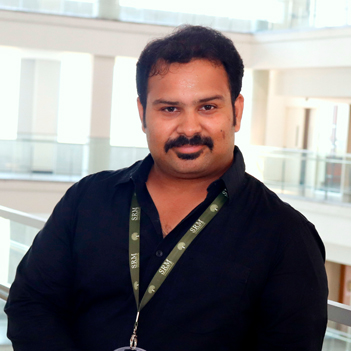 Dr Sutharsan Govindarajan, Assistant Professor, Department of Biological Sciences, SRM University – AP, Andhra Pradesh received an outlay of Rs 55 lakhs by the Department of Science and Technology (DST)- Science and Engineering Research Board (SERB), Government of India to advance the project “Mechanistic understanding of bacterial cytoskeleton inhibition by antibiotics and novel bacteriophage proteins”. The research grant is provided to support active researchers in undertaking research and development in the frontiers of Science and Engineering. Dr Sutharsan exclaims, “It is thrilling to see that my proposal has been accepted for funding. This is a huge recognition for the science that we do at SRM University – AP. Through this funding, I will be able to establish an independent molecular microbiology lab at the university.”
Dr Sutharsan Govindarajan, Assistant Professor, Department of Biological Sciences, SRM University – AP, Andhra Pradesh received an outlay of Rs 55 lakhs by the Department of Science and Technology (DST)- Science and Engineering Research Board (SERB), Government of India to advance the project “Mechanistic understanding of bacterial cytoskeleton inhibition by antibiotics and novel bacteriophage proteins”. The research grant is provided to support active researchers in undertaking research and development in the frontiers of Science and Engineering. Dr Sutharsan exclaims, “It is thrilling to see that my proposal has been accepted for funding. This is a huge recognition for the science that we do at SRM University – AP. Through this funding, I will be able to establish an independent molecular microbiology lab at the university.”
While the entire world is aggressively working to end the menace of COVID19, antimicrobial resistance has been a long-standing unsolved threat. This project is dedicated to interpreting the mechanism of inhibition of bacterial cytoskeleton by antibiotics, which has an immediate impact on the society as it strives to unravel the mystery of ‘how bacteria are able to outsmart antibiotics and survive’. In this project, Dr Sutharsan will be probing antibiotics to comprehend the response of bacteria to them. The scholar says, “Currently, antibiotic resistance is one of the greatest health care challenges of this century leading to serious clinical manifestations. In countries like India, the situation is alarming since nearly 58 thousand new-born babies are dying every year due to bacteria escaping the antibiotics.”
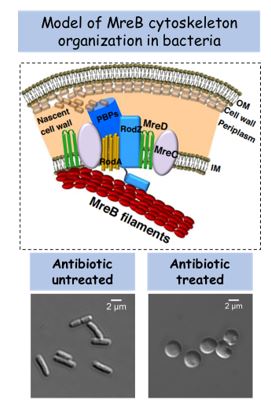 Dr Sutharsan informs, “Largely, solutions to antibiotic resistance problem is directed towards discovering new antibiotics and therapies. However, there are hundreds of existing antibiotics that could be made more effective to kill bacteria. But these antibiotics are not considered as compelling options in the market due to their poor efficiency or lack of understanding. In this project, we will investigate one such antibiotic and attempt to assess its response to the killing agent. By understanding how bacteria escape the antibiotic action, we hope to find effective strategies to combat them.”
Dr Sutharsan informs, “Largely, solutions to antibiotic resistance problem is directed towards discovering new antibiotics and therapies. However, there are hundreds of existing antibiotics that could be made more effective to kill bacteria. But these antibiotics are not considered as compelling options in the market due to their poor efficiency or lack of understanding. In this project, we will investigate one such antibiotic and attempt to assess its response to the killing agent. By understanding how bacteria escape the antibiotic action, we hope to find effective strategies to combat them.”
The laboratory of phage-bacteria interaction will be established and led by Dr Sutharsan at SRM University-AP, where he will be relentlessly working on various aspects of bacteriology including antibiotic resistance, bacteriophage engineering, and therapy. Sharing his plans of advancing the work, Dr Sutharsan says “In the near future, we are planning to connect with the clinicians and explore the possibility of taking our research findings to actual patients – a bench to bedside model of research.”
- Published in News, Research News
Prof Siva Sankar Y’s remarkable research paces up wireless data transmission
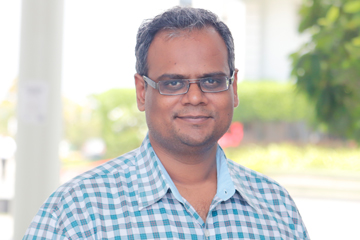 Prof Siva Sankar Y, Professor & Head, Department of Electronics and Communication Engineering, SRM University-AP, Andhra Pradesh published a research paper titled “60 GHz common gate single stage current reuse cascode LNA topology for high data rate applications” in the Journal of Electronic Materials. In the recent era, wireless communication has become essential in the lives of mankind. The data transfer rate of wireless systems varies from a few kilobits per second (kbps) to gigabits per second (Gbps), and the distance of communication supported by these technologies fluctuate from a few meters to kilometers.
Prof Siva Sankar Y, Professor & Head, Department of Electronics and Communication Engineering, SRM University-AP, Andhra Pradesh published a research paper titled “60 GHz common gate single stage current reuse cascode LNA topology for high data rate applications” in the Journal of Electronic Materials. In the recent era, wireless communication has become essential in the lives of mankind. The data transfer rate of wireless systems varies from a few kilobits per second (kbps) to gigabits per second (Gbps), and the distance of communication supported by these technologies fluctuate from a few meters to kilometers.
Gbps transmission entails the transfer of huge data between different devices such as high-definition (HD) video cameras, smartphones, HD set-top boxes, HD DVD players, and high-definition printers. Realizing Gpbs transmission requires operating frequency of several tens of GHz to hundreds of GHz. To meet the escalating demand for high data transfer rates, wireless technologies are penetrating the millimeter wave technology domain, which supports transmission data rates up to Gbps within small distances.
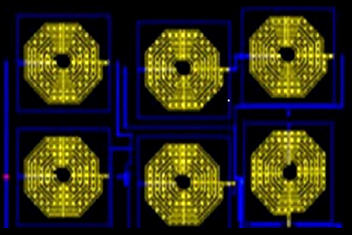 Layout of the proposed circuitMillimeter (mm) wave spectrum can be used for such high-speed wireless communication. Dr Siva Sankar informs, “One of the major challenges in realizing mm wave based transceivers is the design of the CMOS analog RF components. In the design of CMOS RF components, power dissipation, and speed are the two important and conflicting factors that lay stringent requirements on RF design. In our work, RF component design has been used in mmWave transceivers.”
Layout of the proposed circuitMillimeter (mm) wave spectrum can be used for such high-speed wireless communication. Dr Siva Sankar informs, “One of the major challenges in realizing mm wave based transceivers is the design of the CMOS analog RF components. In the design of CMOS RF components, power dissipation, and speed are the two important and conflicting factors that lay stringent requirements on RF design. In our work, RF component design has been used in mmWave transceivers.”
Dr Siva Sankar and his research group developed a high frequency, low noise LNA that can be used in mmWave transceivers to facilitate high data transfer rates. The professor explains, “The designed LNA can be used in mm wave transceivers. The speed (operating frequency) of these components is chosen to be 60GHz because the spectrum around 60GHz is available for unlicensed operation in many regulatory domains including the USA, Japan, Canada and Australia.”. Advancing the research, Dr Siva Sankar and his research group will focus on high speed RF components such as mixers, PLL, and others to realize 60 GHz.
- Published in News, Research News


